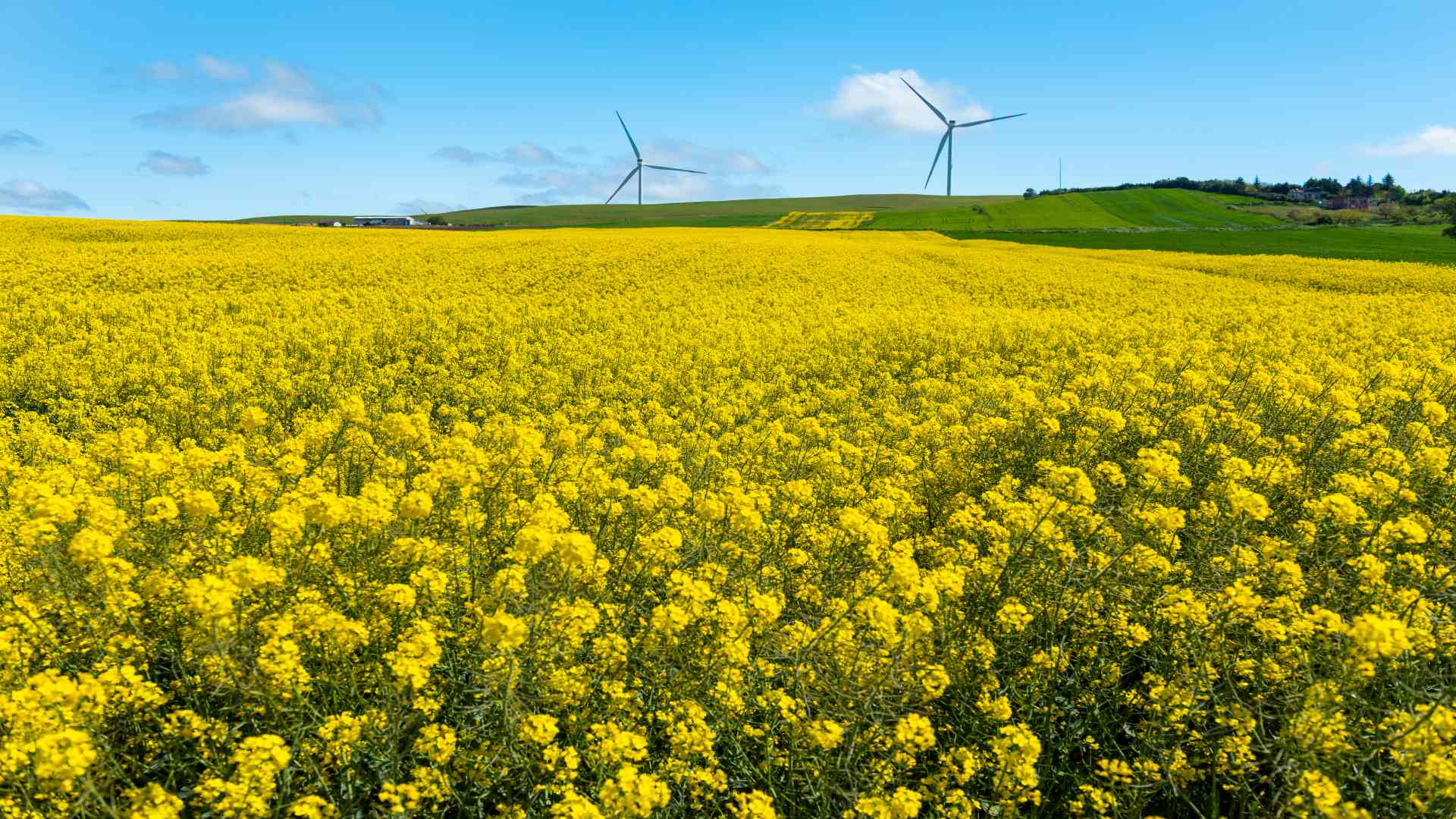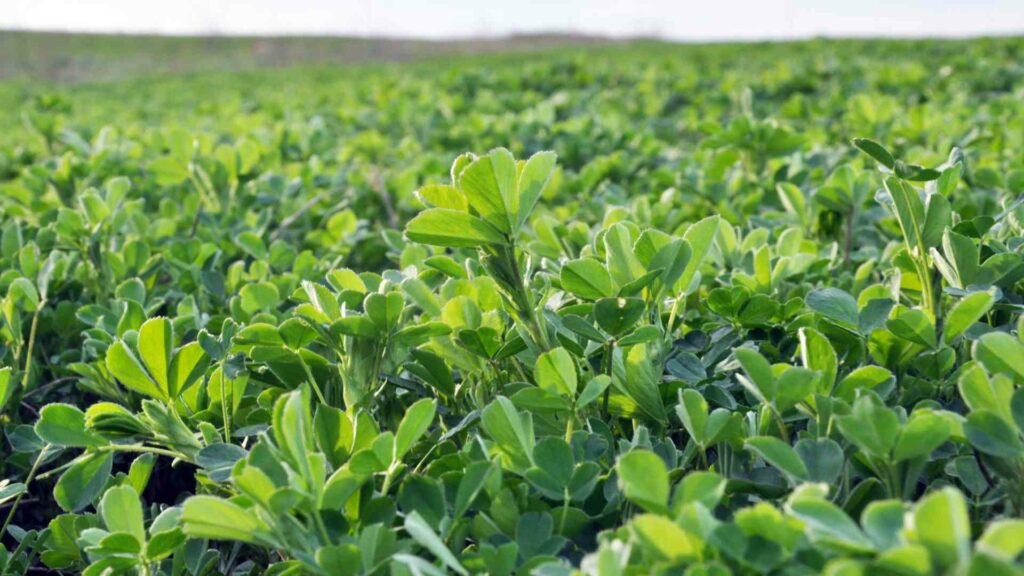Canola and Boron: The Perfect Combination for Healthy Plants
Canola is a Brassica family member with especially high boron requirements. Boron deficiency significantly impacts seed production; yields are doubled when 2 lbs of boron per acre are applied to the canola field with no visual anomalies.

Canola
What is Canola?
Canola is a kind of rapeseed developed in Canada in the 1970s through plant breeding. These plants grow two to six feet tall and create distinctive yellow flowers that develop into pods that resemble pea pods. Each pod contains about 45% oil from tiny black seeds harvested and used to make the widely known canola cooking oil and canola meal used in animal feed.
Canola oil has several properties that make it an excellent choice for cooking and baking. It is low in saturated fat and high in monounsaturated fat and omega-3 fatty acids, both of which are beneficial to the heart.
Furthermore, because the canola oil smoke point is high, it is an amazing choice for high-heat cooking or deep-frying. Its mild flavor makes it a popular choice in restaurants and among consumers. This oil is used in various other foods, including margarine, salad dressings, cookies, bread, and Mayonnaise.
Canola meal is a byproduct of canola oil production that is high in protein (36%) with an excellent amino acid composition and 3.5 percent fat. This makes an excellent livestock feed, pet food, or poultry feed. It is easily digestible and delicious. It can also be used as a fertilizer, providing nutrients especially beneficial for potatoes and golf course greens.
Canola, when added to dairy cow rations, can improve milk production. It can also replace fishmeal in producing some fish species and as a protein supplement for pigs and poultry.
Why does Canola Require Boron?
Canola (rapeseed oil) is an important global oilseed that requires boron for optimal growth and yield. Providing adequate levels of this essential nutrient to plants pays off in many ways: Boron promotes root growth and early establishment, increases vegetative growth and maturity, improves branching and flower retention, enhances the number of set pods and fill, and boosts pollen germination. Furthermore, boron uses nitrogen to raise the amount of oil in the seeds.
What if Boron is Deficient in Canola Plants?
Boron is an essential nutrient for canola plants, contributing to pollination and seed set. Though its deficiency results in poor yield even when no obvious symptoms are present, the most common symptom is brown necrotic areas in the pith of plants.
In severe cases of high deficiency,
- new leaves will be distorted,
- interveinal chlorosis will be developed,
- petioles might have cracked and bent backward,
- stem elongation will be limited,
- flowering period will be long and ineffective,
- plants will be poorly developed, and
- the growing point may eventually die.
- It might also lead to excessive branching.
Where does Boron Deficiency Occur?
Due to its sandy, acidic sedimentary soils and high annual rainfall of about 600 mm, the west coast of Australia is highly susceptible to boron deficiency. Examples of these soils are the Dandaragan plateau sand plains that extend from Midlands to the Eradu sandplain.
How Much Boron is Required?
Canola is a versatile crop that is grown in a variety of soils and climates. However, boron fertilization requirements and applications can vary significantly due to the varying conditions in which it is grown.
Many gardeners simply mix boron into other pre-plant fertilizers, which is not valuable for fall-seeded fields with boron-leaching or boron-fixing soils. According to research and experience, foliar applications formed to flowering continually result in the highest yields.
Boron fertilization rates should be determined using soil tests or plant analyses, field histories, yield goals, and preparation methods.
One of Canada’s Important Agricultural Products
Canola is now one of Canada’s most valuable agricultural producers and a significant revenue source for Canadian farmers. In 2018, more than 20 million tonnes of oilseeds were manufactured, with Saskatchewan fields responsible for more than half of this total. Canola was first developed in the early 1990s when investigators used plant science to create herbicide-resistant plants. This helped farmers with herbicides to control weeds without incurring crop damage.
As a result, farmers were able to begin practicing no-till or conservation tillage, which conserves soil and water. It causes minimum soil disturbance, resulting in less erosion. This type of tillage also improves the organic matter in the soil, enhances soil quality, and promotes better plant growth.
Healthy Fat in a Balanced Diet
There are various types of fat, and not all of them are harmful to your health. Fat is an important food source as it has the highest energy output per gram. Fat also keeps us warm, regulates our immune systems, and contains fat-soluble vitamins and fatty acids.
However, choosing healthier unsaturated fats, like canola oil, is important. It keeps your cholesterol levels in check and lowers heart disease and reduces stroke risk. The Canadian Food Guide recommends including 30-45 mL (2-3 Tablespoons) of unsaturated fat in a daily diet. This can help you maintain your health and avoid future health issues.





